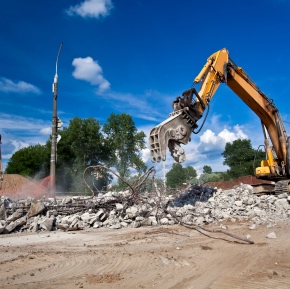
Planning for Safety: Health and Safety Requirements for Construction Sites
When working on a construction site, health and safety are paramount. Recent estimates suggest the number of injuries and, subsequently, fatalities in the construction industry are higher than any other. An average of 64,000 non-fatal injuries occurs each year in the UK, with 49% issues relating to falls. Medtree, a leading distributor of medical supplies and first aid kits worldwide, are sharing the most up-to-date health and safety requirements for construction.
Construction site managers have a duty of care they must follow for:
- Onsite employees
- Any visitors
- External contractors
To ensure you meet the requirements of the Health and Safety at Work Act 1947, you must undertake a risk assessment. The assessment highlights any hazards your employees face, putting into place provisions. For those unsure of what to include, you can find templates online.
Risk Assessments
All construction sites must take risk assessments of the site and equipment as a basic government requirement. The risk assessment should reduce the number of incidents, although accidents may still occur. Your assessment must feature:
- Action and provisions in place to resolve any accidents
- Identify first aiders at the construction site
- Highlight any unsafe equipment or conditions
- Reassess the unsafe conditions as to whether they have been resolved
Equipment or conditions deemed unsafe onsite must be resolved immediately. Your duty is to provide a safe and free from incident workplace. Should issues be identified, work must stop until those incidents have been resolved.
Construction Site Hazards
There are a number of hazards construction workers face on a daily basis – particularly with the use of highly-dangerous equipment and working conditions. As an employer, you must do all in your power to protect your staff.
Falls
Falls account for the largest number of incidents and fatalities in construction. Unstable surfaces, lack of necessary equipment, protection and human error. Fall protection must be in place for staff working on surfaces with unprotected edges or sides, six feet from the ground. You can ensure protection by:
- Installing guardrails
- Safety net systems
- Aerial lifts
- Elevated platforms
- Floor hole covers
All employees should be directed to familiarise themselves with potential hazards around their workstation and alert managers where sufficient protection is not installed.
Scaffolding
Around 2.3 million construction employees work with or on scaffolds. From that, there is an estimated 60 deaths annually due to unsafe scaffolding. Your scaffold should be designed and erected by fully qualified companies and include:
- Solid footing, planked and at least 10 feet from the nearest power line
- Include guardrails, midrails and toeboards
- Staff should ensure head protection is on at all times
- Employers provide non-skid work boots
- The max load is never exceeded
Ladders & Stairways
Unsafe ladder equipment is one of the primary reasons for a large number of falls. If you fail to implement secure ladders or stairways, your employees cannot safely carry necessary tools and material – thus affecting their job. However, you should:
- Mark defective ladders until repaired
- Train employees on ladder safety
- Ladders should conform to OSHA standards
- Tools and materials should be carried using a tool belt or rope
Toxic Substances
Not only can exposure to toxic substances lead to physical injuries, chemical burns and long-term issues, but also lead to fire and explosions. To avoid this, ensure you:
- Maintain a Material Safety Data Sheet (MSDS) and list all onsite chemicals
- MSDS sheet is easily accessible and staff have proper training on what it means
- Follow manufacturer instructions for handling hazardous substances
- Provision in place for spills, alongside spill clean-up kits
- Employers are briefed on all risks and the provisions
- Provide a safe place to store chemicals
Electrics
Overhead lines, cable harnesses and circuit assemblies all contribute to the risk of exposure to electrical shock. You must identify all hazards and resolve them, while providing proper training:
- Follow government electrical requirements
- Live, energized circuits must be clearly highlighted
- Personal protective equipment is essential
- Area must be kept free of debris at all times
- Guardrails installed to avoid falls
- Shield welding areas
- Correct fire extinguishers in place
- Do not let temporary electrics overload
Personal Protective Safety Checklists
While you must identify potential hazards within the conditions and equipment your staff are working, it’s essential you provide them with the proper personal protective equipment. Incidents may still occur, even with all preparation in place, but these safety checklists will minimise the risks.
Eye and Face Protection
Eye and face protection is essential to avoid foreign objects getting in eyes, and should be worn at all times for jobs involving welding, cutting, grinding and more.
Head Protection
Hard hats are a crucial component of construction sites. If a hard hat is severely damaged, it must be replaced immediately. It’s worth noting that hard hats should be inspected routinely for any signs of dents, cracks and general deterioration.
Hand and Foot Protection
Employer’s gloves should fit the hands snugly for each job. The gloves should be inspected and provided for the correct projects, such as heavy-duty rubber gloves for jobs involving concrete. For foot protection, staff should receive anti-slip, puncture and steel-capped boots, preventing the likelihood of crushed toes.
First Aid Kits
As a basic requirement for construction sites, you must have a well-stocked first aid kit. All staff must be able to access the first aid kit and should include:
- Gloves
- Various types of dressing
- Eye pads
- Sharp and blunt scissors
- Instant ice packs
- Triangular bandages
- Sterile gauze swabs
- Crepe bandages
- Wound wash solution
- Deep freeze spray
- Emergency foil blanket
- Safety pins
- Resuscitation face mask
Steps to Implementing an Emergency Plan
Your duty of care must implement steps to an emergency plan. Once you have steps, your emergency plan must be distributed to all staff. These are Medtree’s steps for safety:
- Management has a responsibility to plan, implement and review the procedure for an emergency.
- Keep health and safety procedures up-to-date with government requirements.
- Ensure all first aid trainers have adequate training, with first aid provisions in place. Keep all first aid certificates together and within date.
- Work in accordance with the risk assessment.
- Provide detailed handouts on equipment, hazards and the provisions in place to all employees
- Ensure all staff understand the importance of accident reporting and what to do in an emergency.
- Check on the stock for first aid kits regularly.
- Put in place a fall protection system.
- Create accountability at all levels.
Latest news

4th March 2025
S. Norton Group showcases £20m shredder for metals recycling CEOs
S. Norton Group hosted a tour of its latest £20m investment in state-of-the-art shredder technology for 17 senior leaders in the European metals recycling industry.
Posted in Articles, Building Industry News, Building Products & Structures, Building Services, Case Studies, Facility Management & Building Services, Plant, Equipment and Hire, Posts, Site Preparation, Sustainability & Energy Efficiency, Waste Management & Recycling
28th February 2025
Passivent ventilation solutions are top of the class
Passivent has supplied a combination of Hybrid Plus2 Aircool ventilators and Hybrid Plus Airstract roof ventilation terminals for a new London primary school.
Posted in Air Conditioning, Articles, Building Industry News, Building Products & Structures, Building Services, Case Studies, Ceilings, Facility Management & Building Services, Heating, Ventilation and Air Conditioning - HVAC, Restoration & Refurbishment, Retrofit & Renovation, Roofs, Sustainability & Energy Efficiency, Ventilation, Walls
28th February 2025
Troldtekt: New acoustic liner ensures good acoustics and easy handling
Both a building’s users and its developers have a good reason to get excited about the new Troldtekt Plus 25 panels. This specially developed acoustic panel sets a high standard for both sound absorption and building efficiency.
Posted in Acoustics, Noise & Vibration Control, Articles, Building Industry News, Building Products & Structures, Building Services, Building Systems, Ceilings, Facility Management & Building Services, Floors, Innovations & New Products, Insulation, Interior Design & Construction, Interiors, Restoration & Refurbishment, Retrofit & Renovation, Timber Buildings and Timber Products, Walls
28th February 2025
InstallerSHOW 2025 – Registration is now OPEN!
Building on the success of last year, InstallerSHOW is returning to the NEC from the 24th to the 26th of June…
Posted in Articles, Building Industry Events, Building Industry News, Building Products & Structures, Building Services, Exhibitions and Conferences, Health & Safety, Retrofit & Renovation, Seminars, Sustainability & Energy Efficiency
 Sign up:
Sign up: